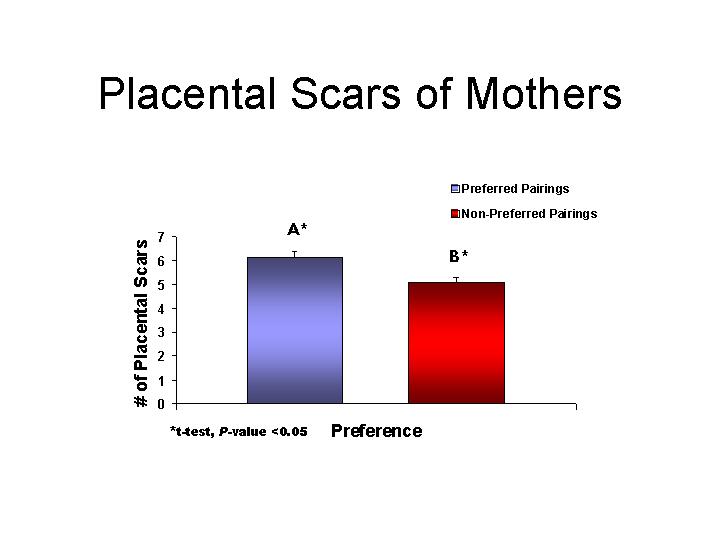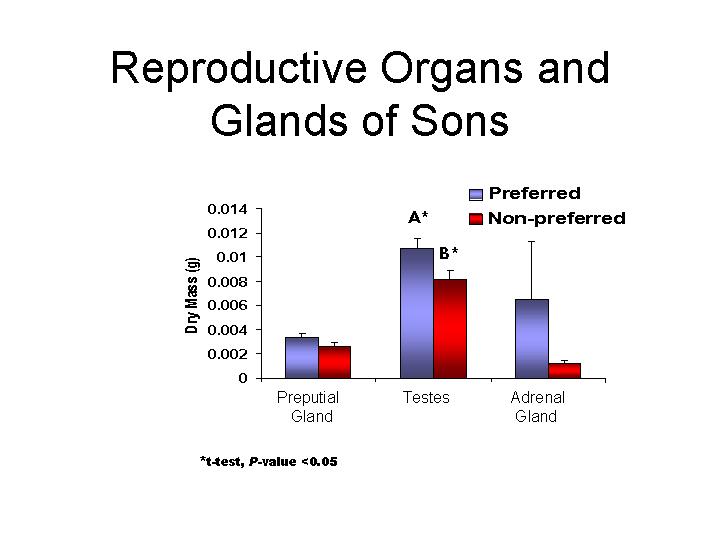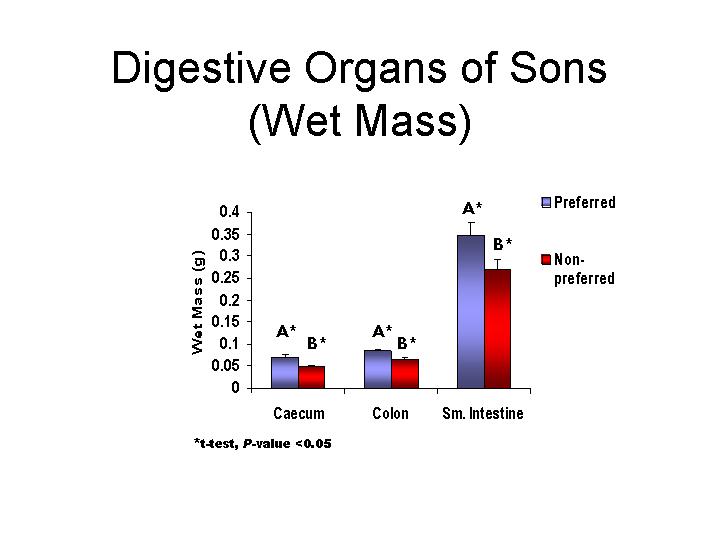In prairie voles we found a positive relationship between male testosterone level and the attractiveness of male odors to females. The relationship between testosterone level and odor attractiveness was affected negatively, however, by depriving males of food post-weaning; suggesting an influence of non-gonadal hormones. One very interesting result was that, in contrast to food-deprivation post-weaning, food-deprivation during gestation enhanced the attractiveness of male odors to females and enhanced testosterone level. Jill Kruper, a Ph.D. student, is currently determining whether male house mice (Mus musculus) with more attractive odors are preferred by females as social partners and as mates and, through paternity analyses, whether males with more attractive odors have higher reproductive success. The dependent variables that she is investigating are the testosterone level, corticosteroid level, and the nutritional history of males.
In house mice, our first set of experiments showed that females that were mated with males with preferred odors conceived more offspring than females that were mated with males with non-preferred odors. There were no differences, however, in litter size at birth or growth rates of offspring.
 |
| House mice embryos. |
| The number of placental scars
was significantly greater in females that were paired with males with
preferred odors compared with those paired with males with non-preferred
odors. |
 |
| The mass of the testes was significantly
greater in sons born to females paired with males with preferred odors.
There was no significant difference in blood concentrations of testosterone,
however. |
 |
| The digestive organs of sons
born to females paired with males with preferred odors were significantly
heavier than those of sons born to females paired with males with non-preferred
odors. |
 |
CONCLUSIONS:
|
|